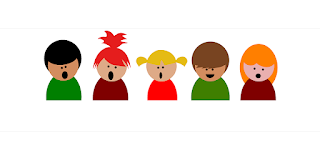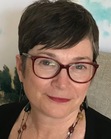Carolee Dean's Blog, page 9
January 28, 2023
Accolades for New Mexico Author Susan Wider
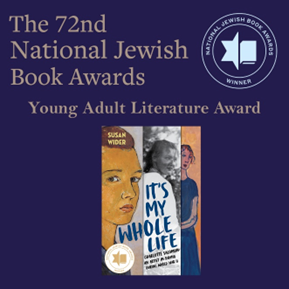 Susan Wider, New Mexico children’s author, received the Young Adult Literature Award from the Jewish Book Council for It's My Whole Life: Charlotte Salomon: An Artist in Hiding During World War II (Norton Young Readers).
Susan Wider, New Mexico children’s author, received the Young Adult Literature Award from the Jewish Book Council for It's My Whole Life: Charlotte Salomon: An Artist in Hiding During World War II (Norton Young Readers). The Jewish Book Council was founded in 1943. It is dedicated to the support and celebration of Jewish literature. Each year the organization gives awards for outstanding Jewish literature. Earlier this month, on January 18th, they announced the winners of the 72nd National Jewish Book Awards as part of their Books That Changed My Life festival in Manhattan.
Charlotte was a young Jewish artist who created a series of paintings to document her experiences while hiding from the Nazis. I interviewed the author, Susan Wider, in August of 2022 when the book first came out. I have posted a copy of that interview below. To find out more about the Jewish Book Council awards and other noteworthy titles, visit their WEBSITE.
Carolee: In your author’s note you mention that you first became aware of Charlotte when another artist, Maira Kalman, shared in an interview about how Charlotte influenced her work? How has Charlotte influenced your work?
Susan: When the Nazi invasion of the south of France became inevitable, Charlotte described her need to “vanish for a while from the human plane and make every sacrifice in order to create.” With Charlotte’s words in my head, I find it easier to close out the world—as politely as possible—and disappear into my writing
Carolee: What inspired you to write a book about her?
Susan: When I realized that there were no books about Charlotte for young readers—apart from one Italian graphic novel-style biography—I wanted to write about her for teen readers. Charlotte deals with an avalanche of difficulties, from psychological abuse to family suicides to racism to genocide to living as a refugee, all issues that many teens face today.
Carolee: Your original manuscript for this book included three artists. Who were the other two?
Susan: As I was researching Charlotte’s story, I came across two other creative young women—among many hundreds of thousands—whose lives and talents were severely disrupted by World War II. In the initial manuscript I braided the stories of Charlotte Salomon, Helga Weiss, and Zdena Berger because their creative output was influenced by pre-concentration camp years (Charlotte); time inside a concentration camp (Helga); and post-war reflection on surviving four camps (Zdena).
Carolee: Those are three very interesting perspectives. How did you decide to focus on Charlotte?
Susan: When my agent sent that manuscript to various publishers, they all felt that each woman deserved her own book. Back to the drawing board and my agent suggested I start with Charlotte.
Carolee: What is one thing you hope young readers take away from Charlotte’s story?
Susan: In spite of everything she was up against—Grandfather, her stepmother, a family history of suicide, Adolf Hitler—Charlotte was able to find her voice in art and writing “with the feeling I had something I would be able to say to humanity.” I hope she inspires young readers to search for their own forms of self-expression, even in dark times.
Carolee: I was certainly inspired by her story when I read it. Art is what gave beauty and purpose to her life during a time that could have otherwise been unbearable. Thanks so much for sharing her story!
Thanks for stopping by my blog. Sign up for my newsletter HERE to keep up with news and free offers and you will receive the free writing template for Travel Trouble sent directly to your email address.
Accolades for New Mexico Author Susan Wider.
 Susan Wider, New Mexico children’s author, received the Young Adult Literature Award from the Jewish Book Council for It's My Whole Life: Charlotte Salomon: An Artist in Hiding During World War II (Norton Young Readers).
Susan Wider, New Mexico children’s author, received the Young Adult Literature Award from the Jewish Book Council for It's My Whole Life: Charlotte Salomon: An Artist in Hiding During World War II (Norton Young Readers). The Jewish Book Council was founded in 1943. It is dedicated to the support and celebration of Jewish literature. Each year the organization gives awards for outstanding Jewish literature. Earlier this month, on January 18th, they announced the winners of the 72nd National Jewish Book Awards as part of their Books That Changed My Life festival in Manhattan.
Charlotte was a young Jewish artist who created a series of paintings to document her experiences while hiding from the Nazis. I interviewed the author, Susan Wider, in August of 2022 when the book first came out. I have posted a copy of that interview below. To find out more about the Jewish Book Council awards and other noteworthy titles, visit their WEBSITE.
Carolee: In your author’s note you mention that you first became aware of Charlotte when another artist, Maira Kalman, shared in an interview about how Charlotte influenced her work? How has Charlotte influenced your work?
Susan: When the Nazi invasion of the south of France became inevitable, Charlotte described her need to “vanish for a while from the human plane and make every sacrifice in order to create.” With Charlotte’s words in my head, I find it easier to close out the world—as politely as possible—and disappear into my writing
Carolee: What inspired you to write a book about her?
Susan: When I realized that there were no books about Charlotte for young readers—apart from one Italian graphic novel-style biography—I wanted to write about her for teen readers. Charlotte deals with an avalanche of difficulties, from psychological abuse to family suicides to racism to genocide to living as a refugee, all issues that many teens face today.
Carolee: Your original manuscript for this book included three artists. Who were the other two?
Susan: As I was researching Charlotte’s story, I came across two other creative young women—among many hundreds of thousands—whose lives and talents were severely disrupted by World War II. In the initial manuscript I braided the stories of Charlotte Salomon, Helga Weiss, and Zdena Berger because their creative output was influenced by pre-concentration camp years (Charlotte); time inside a concentration camp (Helga); and post-war reflection on surviving four camps (Zdena).
Carolee: Those are three very interesting perspectives. How did you decide to focus on Charlotte?
Susan: When my agent sent that manuscript to various publishers, they all felt that each woman deserved her own book. Back to the drawing board and my agent suggested I start with Charlotte.
Carolee: What is one thing you hope young readers take away from Charlotte’s story?
Susan: In spite of everything she was up against—Grandfather, her stepmother, a family history of suicide, Adolf Hitler—Charlotte was able to find her voice in art and writing “with the feeling I had something I would be able to say to humanity.” I hope she inspires young readers to search for their own forms of self-expression, even in dark times.
Carolee: I was certainly inspired by her story when I read it. Art is what gave beauty and purpose to her life during a time that could have otherwise been unbearable. Thanks so much for sharing her story!
Thanks for stopping by my blog. Sign up for my newsletter HERE to keep up with news and free offers and you will receive the free writing template for Travel Trouble sent directly to your email address.
January 6, 2023
UnDiagnosed: The Ugly Side of Dyslexia
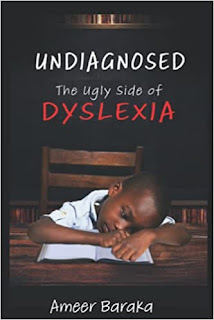
In Undiagnosed: The Ugly Side of Dyslexia, Ameer Baraka shares his personal struggles with growing up on the mean streets of New Orleans, being unable to read, and in continual trouble with the law. He was incarcerated at the age of 14 for manslaughter and served time again in his twenties. He was finally diagnosed with dyslexia while in prison.
After learning to read, Ameer turned his life around and became an Emmy-nominated actor. He is also a dyslexia advocate, youth mentor, and prison coach. He works with youth that are behind bars. He is keenly aware of the school-to-prison path for kids who can't read and makes it his mission to raise awareness about dyslexia by speaking at universities, businesses, and youth organizations around the world.
As I mentioned in last week's post about Jubilee: The First Therapy Horse and an Olympic Dream, my mission for 2023 is to share stories of resilience. There are many stories out in the world today about people who have overcome dyslexia to become successful entrepreneurs, millionaires, and billionaires. But there is also an ugly side to dyslexia. It's the story Ameer shares of young kids who get stuck in a school-to-prison pipeline because they cannot read. Many of these young people belong to minorities. They don't have wealthy parents who can pay for expensive tutors or private schools for kids with learning differences. They don't have parents with the tenacity to go up against powerful school systems to demand accommodations for their struggling learners. They are not raised in families with the understanding and the means to support alternative dreams if pursuing higher education is not in their child's future.
And yet, Undiagnosed is still ultimately a story of hope and resilience. Ameer takes us through his journey through a very dark place to come out the other side where he offers hope to kids who were just like him and understanding to educators as well as legal authorities. He now speaks to police departments and racial bias. He used to be part of the problem, and he has become a shining example of the solution.
Ameer will be speaking on Monday, January 9, 2023, at a free online event hosted by the Dallas Chapter of the International Dyslexia Association. Hear his story live at his book launch. See the QR code at the bottom of this post for details.
When I was working in the public schools, a large percentage of my struggling students had parents who were or had been incarcerated. It is what inspired me to write Take Me There, about a teen boy who has a big heart but always finds himself on the wrong side of the law. The story is fictional, but it was inspired by a theme I saw over and over again. Parents can't read and end up in prison. Their kids can't read and often end up on a similar path, not knowing why. The young man in my story goes looking for his father who is in prison in Texas to find out if badness is in his blood or if it is something he can outrun. What he learns is that his father's illiteracy led him to a life of crime. He was a football star in a small Texas high school who got passed along in school by teachers who meant well but never really helped him.
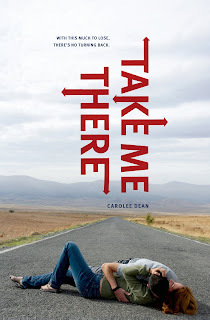
There are many places in our country where there is a simple formula for estimating the size of a new prison. They look at the literacy rates of the surrounding area. That is the real crime, that we have learned the formula for a life of crime, that it is within our power as a society to remedy much of it, but that we don't. Listen to Ameer's story to get inspired about what can be done. See details below.
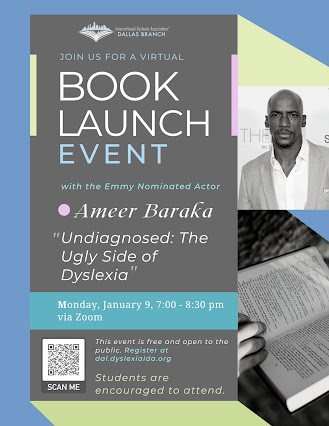
January 1, 2023
Jubilee - Launching a Year of STORIES ABOUT RESILIENCE
How do we teach resilience, grit, and emotional fortitude? That is one of the questions that weighs on my heart these days. For that reason, I'm launching a year of stories about resilience for 2023, and I'm starting with Jubilee by KT Johnston, illustrated by Anabella Ortiz.
If you follow my blog or my newsletter, you know that I often discuss narrative non-fiction picture books on a variety of subjects including history, science, and disability. One of the hot topics in education these days is mental health. There is a children's mental health crisis going on in our country brought on largely by issues connected with the pandemic. Books on the subject are flooding the marketplace, but resilience is not an easy quality to teach.
One of the ways that young people learn about grit, perseverance, resilience, and developing a growth mindset is by reading stories about real people (and animals) who have overcome extreme obstacles. When we see another person do something courageous, we start to believe that we can be courageous, too.
To kick off the new year, I'm featuring the narrative non-fiction picture book, Jubilee: The First Therapy Horse and an Olympic Dream. Find the book HERE.
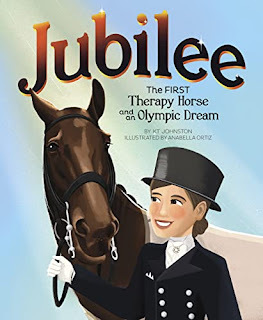
Lis Hartel began competing in dressage when she was thirteen years old. In 1943 and 1944 she and her horse, Gigolo, were the national champions of Denmark, but within a few months of their second title, the tides turned. Lis contracted polio and was told she would probably never walk again and would definitely never ride.
Horses were her life and so Lis made up her mind that she would find a way to ride. Unfortunately, Gigolo was injured, but Jubilee was available. Jubilee was not a showhorse, but he was gentle and patient. Even so, Lis fell off of Jubilee many times. But each time, she got back up again. Gradually, Lis regained some of her strength and her balance, but not all of it. She had to use very subtle movements to direct the horse. Jubilee began looking and acting like a showhorse. They began competing and winning shows until they eventually qualified to compete in the Olympic games. You will have to read the book to find out what happened next.
Lis went on to create the first riding center for people with disabilities. The partnership that she and Jubilee formed inspired similar centers all around the world and a type of physical therapy called hippotherapy.
As a speech-language pathologist, I'm familiar with the many benefits of hippotherapy. To learn more about this exciting intervention and the resources available for families, visit the American Hippotherapy Association HERE.
Although Jubilee is a picture book, it is appropriate for older students because of the advanced concepts and vocabulary. Consider teaching it alongside Come On Seabiscuit! by Ralph Moody written for grades 7-9.

Moody's book was originally published in 1963, but it made a comeback after Laura Hillenbrand's book for adults. Seabiscuit was the depression-era underdog that won the famous match race against War Admiral featured in the 2003 movie named after the thoroughbred. There is also a one-hour PBS Documentary on Seabiscuit found HERE.
Watch my blog in 2023 for more stories about people (and animals) that are examples of grit and resilience. Sign up for my newsletter and receive a free PDF of the first book in my Decodable Series, No Gift for Man. The PDF is text only. It also links to an online audio version of the book. The illustrated version will be available on Amazon soon. This is the first installment in the HOT ROD Series (Higher Order Thinking Through the Reading of Decodables.) Visit the Sign Up Page on my new website at www.wordtravelpress.com for details. Then explore strategies like Pair and Share Reading. Find downloadable activities to go with the book on my page for COR Instruction.
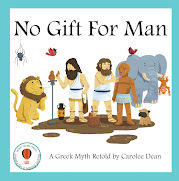
October 26, 2022
Celebrating Dyslexia Awareness Month with A Walk in the Words
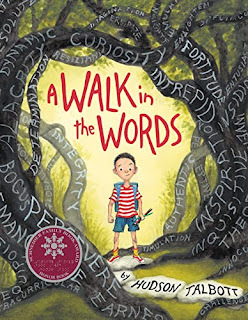
October is Dyslexia Awareness Month and I always like to celebrate by sharing children's books about kids with dyslexia. This October, I'm featuring A Walk in the Words, an autobiographical picture book written and illustrated by Hudson Talbott about his struggles with learning to read.
Drawing was always easy for Talbott, but reading was a challenge. His love of creating stories was one of the things that inspired him to persevere. He compares learning new words for his stories with finding new colors for his art. He learned that it was okay to tackle words at his own pace which is a lesson that can be hard for many kids to learn. He describes the words he knew as "Stepping stones leading me onward.' One of my favorite illustrations is his "Slow Readers Hall of Fame," which includes people like Albert Einstein, Leonardo DaVinci, George Washington, and William Shakespeare.
A Walk in the Words was a 2022 Schneider Family Honor Book. This award honors an author or illustrator for, "A book that embodies an artistic expression of the disability experience for child and adolescent audiences." Read about this award and find other titles featuring children with a variety of disabilities on the website for the Schneider Family Book Award.
Hudson Talbott is the creator of over 20 children's books including We're Back! A Dinosaur's Story which Steven Speilberg turned into a full-length animated film.
To find other titles about kids with dyslexia, visit last October's Post on Children's Books Featuring Young People with Dyslexia.
NEW DECODABLE BOOK SERIES
I'm also celebrating Dyslexia Awareness Month by giving away a free PDF of the first book in my Decodable Series, No Gift for Man. The PDF is text only. It also links to an online audio version of the book. The illustrated version will be available on Amazon in November. This is the first installment in the HOT ROD Series (Higher Order Thinking Through the Reading of Decodables.)
Visit the Sign Up Page on my new website at www.wordtravelpress.com for details. Then explore strategies like Pair and Share Reading. Find downloadable activities to go with the book on my page for COR Instruction. If you already receive my newsletter, a link to the free PDF will be available in the November edition. If you are attending the International Dyslexia Association Annual Conference in San Antonio, be sure to check out my session on decodable books. See details below:
International Dyslexia Association - November 10-12, 2022 in San Antonio, TX
1. Live presentation - #93 - The Goldilocks Effect: Finding the “Just Right” Books for Struggling Readers - Saturday morning, 11-12 pm, November 12, 2022.
2. Recorded Presentation - #165 - Heracles vs. Hercules: The Importance of Cognitive Flexibility (I will be doing this presentation with Kelly Cartwright Ph.D.)
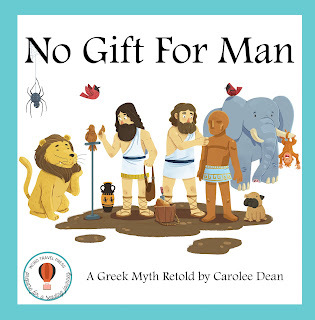
October 24, 2022
Cloaked in Courage - Q&A with Author, Beth Anderson
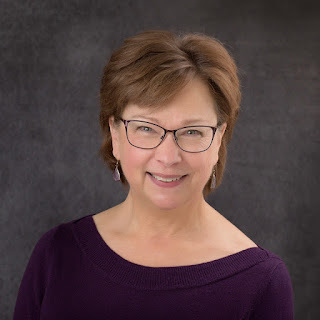 Beth Anderson is joining me today for a Q&A on her latest book, Cloaked in Courage: Uncovering Deborah Sampson, Patriot Soldier. Beth is a former educator and author whose well-researched books make history come alive for young people. I also appreciate how she discovers little-known characters and shares their fascinating adventures with her readers. I frequently use narrative non-fiction picture books with struggling readers. Her books are some of my favorites and theirs. I featured one of her titles, An Inconvenient Alphabet: Ben Franklin and Noah Webster's Spelling Revolution, in my resource for educators - Story Frames for Teaching Literacy (Brookes Publishing, 2021). An Inconvenient Alphabet takes place in the years after the Revolutionary War and would be a good title to explore alongside Cloaked in Courage which will be available on November 15, 2022. Scroll to the bottom of this post to find out how to pre-order Beth's new book and get some fun book swag in the process.
Beth Anderson is joining me today for a Q&A on her latest book, Cloaked in Courage: Uncovering Deborah Sampson, Patriot Soldier. Beth is a former educator and author whose well-researched books make history come alive for young people. I also appreciate how she discovers little-known characters and shares their fascinating adventures with her readers. I frequently use narrative non-fiction picture books with struggling readers. Her books are some of my favorites and theirs. I featured one of her titles, An Inconvenient Alphabet: Ben Franklin and Noah Webster's Spelling Revolution, in my resource for educators - Story Frames for Teaching Literacy (Brookes Publishing, 2021). An Inconvenient Alphabet takes place in the years after the Revolutionary War and would be a good title to explore alongside Cloaked in Courage which will be available on November 15, 2022. Scroll to the bottom of this post to find out how to pre-order Beth's new book and get some fun book swag in the process. 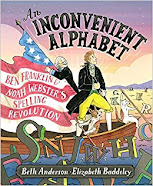
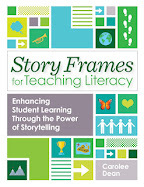 LINKS TO THE COMMON COREI was excited for the opportunity to preview Cloaked in Courage and to ask Beth some questions about the story. Because of its historical context, Beth's book is appropriate for students of all ages. Teachers of older students may be interested to know how the story may be linked to the Common Core State Standards:
LINKS TO THE COMMON COREI was excited for the opportunity to preview Cloaked in Courage and to ask Beth some questions about the story. Because of its historical context, Beth's book is appropriate for students of all ages. Teachers of older students may be interested to know how the story may be linked to the Common Core State Standards:Grade 3 - CCSS.ELA-LITERACY.RL.3.9 requires students compare stories written by the same author. Ask students to Compare and Contrast Cloaked in Courage with another book by Beth Anderson. I suggest Revolutionary Prudence Wright: Leading the Minute Women in the Fight for Independence. Both stories are about real women who were instrumental in helping America in the fight for freedom.
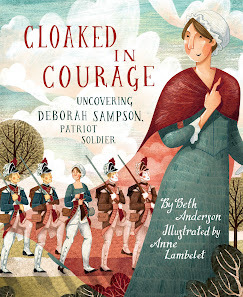
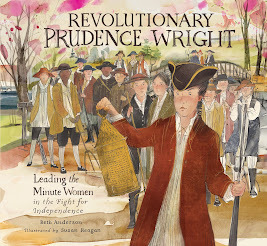 Grade 4 - CCSS.ELA-LITERACY.RL.4.6 requires students to compare and contrast the point of view from which stories are narrated, including the difference between first- and third-person narrations. Cloaked in Courage is written in the third person as are most biographical stories. Compare it to Almost to Freedom told from the perspective of a doll that belongs to a family escaping to freedom through the Underground Railroad. It is written by Vaunda Micheaux Nelson and illustrated by Colin Bootman who won a Caldecott Honor for his masterful artwork.
Grade 4 - CCSS.ELA-LITERACY.RL.4.6 requires students to compare and contrast the point of view from which stories are narrated, including the difference between first- and third-person narrations. Cloaked in Courage is written in the third person as are most biographical stories. Compare it to Almost to Freedom told from the perspective of a doll that belongs to a family escaping to freedom through the Underground Railroad. It is written by Vaunda Micheaux Nelson and illustrated by Colin Bootman who won a Caldecott Honor for his masterful artwork.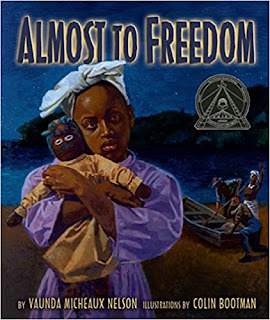
Grade 5 - CCSS.ELA-LITERACY.RL.5.9 requires students to be able to compare stories in the same genre specifically in regard to looking at how different authors handle similar subjects. Comparing Cloaked in Courage to Gingerbread for Liberty! How a German Baker Helped Win the American Revolution by Mara Rockliff would be a fun fit for addressing this standard. You could also compare An Inconvenient Alphabet to another book by Mara Rockliff, Mesmerized: How Ben Franklin Solved a Mystery that Baffled All of France. Both of those books share little-known stories about a well-known historical figure, Benjamin Franklin. Both of Mara Rockliff's books are featured in Story Frames.
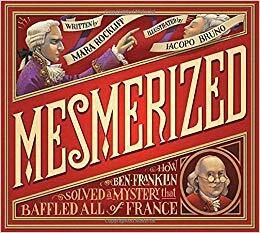 Grade 6 - CCSS.ELA-LITERACY.RL.6.9 requires students to be able to compare similar subjects explored across different genres. Comparing Beth’s picture book to any sixth-grade book on the subject of the Revolutionary War would be a great way to show how the same subject can be handled in very different ways. The Newbery Medal winner, Johnny Tremain: A Story of Boston in Revolt, would be an excellent choice. Although Johnny Tremain is a fictional character, the author, Esther Hoskins Forbes, conducted extensive research to write the story about life during and just before the start of the Revolutionary War. Comparing a narrative non-ficiton picture book such as Cloaked In Courage to a fictional novel on the same subject would be a good way to explore this standard.
Grade 6 - CCSS.ELA-LITERACY.RL.6.9 requires students to be able to compare similar subjects explored across different genres. Comparing Beth’s picture book to any sixth-grade book on the subject of the Revolutionary War would be a great way to show how the same subject can be handled in very different ways. The Newbery Medal winner, Johnny Tremain: A Story of Boston in Revolt, would be an excellent choice. Although Johnny Tremain is a fictional character, the author, Esther Hoskins Forbes, conducted extensive research to write the story about life during and just before the start of the Revolutionary War. Comparing a narrative non-ficiton picture book such as Cloaked In Courage to a fictional novel on the same subject would be a good way to explore this standard.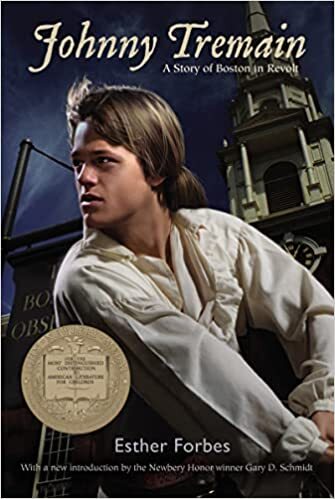
If you are interested in using narrative non-fiction picture books like Beth’s with older students, see the piece I wrote for Beth's blog on Not Just for Little Kids: Five Reasons to Use Picture Books with Older Students. And now... I’m delighted that Beth Anderson is joining us today for a Q&A about her new book, Cloaked in Courage.INTERVIEWCarolee: There are many similarities between Cloaked in Courage and Revolutionary Prudence Wright. Both books feature strong female characters, both dressing as men, to further the cause of the American rebels in the Revolutionary War. Those are ways they are similar. How would you characterize the main differences between these women?
Beth: I’m always fascinated with how people become who they are. And that’s really what Deborah Sampson’s story is about. The major difference I see between the two women is in their experiences growing up. Prudence was raised by forward-thinking parents. They sent her to school, encouraged her to participate in family “debate,” and allowed her to gain “male” skills like fishing and hunting. She was raised to see herself as a capable being. On the other hand, Deborah was “put out” at age 5 when her mother was unable to care for her children. She basically raised herself while working as an indentured servant in several households. She had to discover her capableness, sneak her education, and find her place in the world on her own. She had to dig deep for perseverance, not only to push back against the traditions that set her up for a limited life as a servant, but also the traditions that defined her future and restricted the path of women.
Carolee: I knew that parents in financial distress often hired out their children to work for other people, but I had no idea anyone would “hire” a child as young as five as was the case with Deborah. How widespread was the practice of hiring such young children? Did the parents receive money or were they just looking for room and board for children they could not afford?
Beth: I hadn’t heard of this tradition to “put out” or “bind out” children either. It offered a tremendous window into the times and her childhood as I dug into the research. Her father deserted the family, and her mother was unable to feed and clothe all her children. The restrictions placed on girls and women didn’t prepare them to make a living, so this was a heart-wrenching choice some had to make. This was basically the foster care system of the times and involved certain obligations. It was how a community cared for its members. They would place a child in the service of someone they owed a debt. As far as I know, the act of binding a child out served two purposes; it paid debts and also provided care for the child. This way, infants remaining with the mother and the children put out had a better option than starvation. Deborah was probably fortunate to first be placed in the home of an elderly aunt who cared for her and likely was the one who taught her to read and write. While this was emotionally extremely difficult, perhaps we can think of her mother’s act as generous and selfless, giving her daughter a chance in life. I could see how Deborah doing “male” chores as she grew up made her strong inside and out and prepared her for the path she was to choose later.
Carolee: Deborah survived the war but almost died of disease. What disease was it? And how often do you think the outcome of wars was affected by diseases?
Beth: Historians can’t verify which disease Deborah had, and different sources offer varied possibilities. This is why I left the disease unnamed. At the time, there were many diseases and illnesses that could be deadly: typhoid, typhus, measles, scarlet fever, smallpox, dysentery, putrid fever, malaria, yellow fever, and more. The question of what she likely had was one I put to the expert I consulted when Anne Lambelet was working on illustrations. She would need to show it. Based on the date and location, summer/fall in Philadelphia in 1783, the expert said measles. There was no vaccine for measles and many died from it. Medical staff weren’t aware of germs or viruses or what caused infection. Many practices did more harm than good. Sanitation and hygiene were lacking. And when you put troops closely together with others from different areas, contagion runs wild. Diseases affect the readiness of troops, strategies, logistics, and pose a constant danger. There’s no question that disease affects every aspect of our lives, including wars.
Carolee: You often write about little-known historical figures. How do you find out about them?
Beth: I’m always on the lookout for people and events that make us think a little differently about history. I run across these people from history in all sorts of ways - from newsfeeds of all sorts to articles or researching one thing that leads to something else. Deborah Sampson was on my radar for a while but at first, her story didn’t grab me. I had only seen very limited information on her, and nothing about her childhood. A few years later - in 2020 I think - there was an article about her being mentioned in an old diary that the Museum of the American Revolution had just acquired. It referred to her first attempt to enlist - something new to me. When I looked at that incident, it revealed more character. So I tried again. The diary turned out not to be helpful, but in digging past the surface (as with Tad Lincoln’s story), I found the person. I got a peek into motivation and experiences that made her who she was. Suddenly she inspired respect and amazement. As I researched, I found that a lot of what’s out there about her is fiction—that's been repeated as fact—and she’s sort of been appropriated for various causes. My goal was to try to tell her story as close to verifiable truth as possible, to let her be her and let that be enough. As with all things history - it’s complicated. There’s a lot of joy in digging out a piece of history that opens your eyes, but, with limited resources, these little-known figures are definitely a challenge.
Carolee: Students often read a book like yours and want to learn more about a topic. If the subject is broad, such as the Revolutionary War, it may be hard to narrow down all the possible choices. On the other hand, if they are interested in finding out about a little-known person like Deborah Sampson, there may not be many resources. Do you have any tips for young people who want to explore a topic from one of your books?
Beth: One of my goals with all my books is to spark interest in history. In my author’s notes, I share what grabbed me about a person or topic as an example for kids. I also try to offer more information about the times so there are many potential “sparks” to ignite curiosity to look further. My bibliographies list the sources I used. So many primary source documents are accessible digitally online. To see Deborah Sampson’s enlistment paper, or muster roll, or pension application is exciting! But then, take those facts and try to understand the person, their motivation, their risks, their challenges. Use critical thinking, as well as introspection, and connect as humans. That’s what makes digging into history meaningful. The back matter of this book shares some of the challenges of research, including many of the potential pitfalls. When kids start asking the WHY questions, it’s time to dig into the time and place. History becomes real and fascinating. Ask questions! And let your questions guide you.
Carolee: Thanks so much for joining us today. Are there any parting thoughts you would like to leave us about Deborah Sampson?
Beth: Thank you for sharing Cloaked in Courage and encouraging using it in classrooms! When kids understand the human side of history, they can connect. They’ll see that we, too, are impacted by our time and place and are also a part of history.
ADDITIONAL INFORMATION, LINKS, AND PREORDERSTo pre-order signed copies of Cloaked in Courage and special swag go to https://shop.twjbookshop.com/products/cloaked-in-courage-signed-copy-preorder-out-11-15-22.
For Colorado Front-Range residents, you may pre-order books from The Wandering Jellyfish Book Store and receive a signed copy, button, bookmark, and journal at https://shop.twjbookshop.com/products/cloaked-in-courage-signed-copy-preorder-out-11-15-22. You may also order the book from any local bookstore.
Watch a conversation between Beth and the illustrator, Anne Lambelet, on November 15, 2022, on Facebook - https://www.facebook.com/events/3347028345565090
And here’s the educator guide: https://bethandersonwriter.files.wordpress.com/2022/10/cloaked-in-courage_educatordiscussion-guide.pdf.
HAPPY READING!!
September 29, 2022
Let's Connect at My Upcoming Presentations
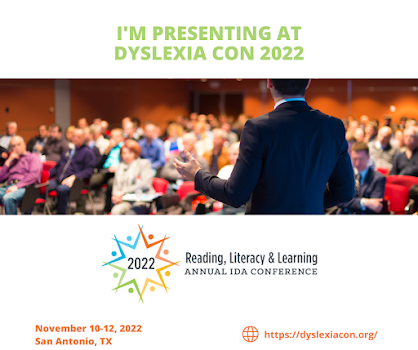
I'm excited to be speaking at some of my favorite conferences this fall. If you happen to be attending, let's connect at one of my upcoming presentations. See the schedule below. Also, in celebration of my new decodable series and the launching of my new website, Word Travel Press, I'm offering a chance to win $100 for conference travel (or whatever) for signing up for my newsletter. You will also receive a free PDF (text only) of my new decodable book, No Gift for Man. The winner of the $100 gift card will be contacted on November 14 and announced in my newsletter. Visit my new website at Word Travel Press and go to the Sign Up page to sign up for my newsletter, or use the QR code below. If you already receive my newsletter, watch for information coming soon about how to sign up for the drawing and receive the free PDF.
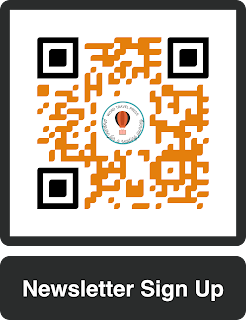
My upcoming presentations are below:
Reading in the Rockies - IDA-RMB - October 7-8 in Vail, CO
Live Presentation - "Decodable Texts: The Goldilocks Effect - Finding the "Just Right" Books for Struggling Readers." Friday 10:45 am October 7.
International Dyslexia Association - November 10-12, 2022 in San Antonio, TX
1. Live presentation - #93 - The Goldilocks Effect: Finding the “Just Right” Books for Struggling Readers - Saturday morning, 11-12 pm, November 12, 2022.
2. Recorded Presentation - #165 - Heracles vs. Hercules: The Importance of Cognitive Flexibility (I will be doing this presentation with Kelly Cartwright Ph.D.)
I will also have a booth at the San Antonio IDA Conference for Word Travel Press, my new publishing company for decodable books. Stop by Booth #518.
American Speech-Language and Hearing Conference - November 17-19, New Orleans, LA
Recorded Presentation - #2118V - Story Frames for Teaching Literacy: Narrative Intervention Strategies for Comprehension and Written Language.
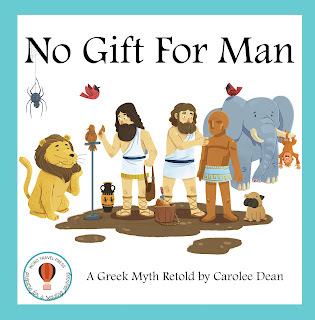
August 26, 2022
Teaching Memoir Writing to Kids: An Interview with Author/Educator Lesley Roessing
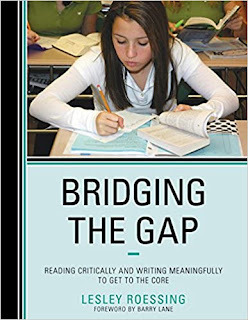
It's the start of a new school year and teachers are looking for ways to provide authentic and engaging writing experiences for students. With that in mind, I'm circling back to the topic of memoir with an interview and Q&A with Leslie Roessing, M. Ed. Lesley is a featured author in my book, Story Frames for Teaching Literacy: Enhancing Student Learning Through the Power of Storytelling (Brookes Publishing, 2021), and wrote the chapter entitled, “Memoir: Writing Our Lives.”
She also has a book on the subject called Bridging the Gap: Reading Critically and Writing Meaningfully to Get to the Core. In this exciting resource, she uses memoir and creative nonfiction with reluctant readers and writers to form bridges between reading and writing, fiction and nonfiction, and narrative and informative writing. Lesley has vast experience on the subject. She taught middle school for more than 20 years, served as Founding Director of the Coastal Savannah Writing Project, and was a Senior Lecturer at Georgia Southern University.
Carolee: In your chapter in Story Frames as well as in your book, Bridging the Gap, you talk about using memoir as a bridge between narrative and informative writing and even argument writing. What connections do you see between these very different genres, and how do you bridge that gap with students?
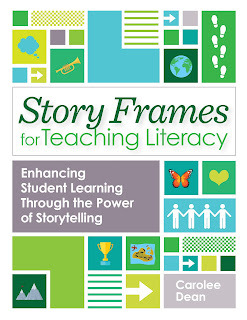 See Roessing's chapter entitled
See Roessing's chapter entitled"Memoir: Writing Our Lives."
Lesley: When I teach or work with teachers, I advocate moving readers and writers from the familiar to the less familiar, moving from narrative to informative to argument in reading and writing. When we think of narrative writing, we think of fiction. Humans have always been storytellers (“Once upon a time…”). Young readers usually begin with reading stories and writing stories. And, therefore, that was how I began my teaching year—with reading and writing stories.
I found the jump to informational reading and writing presented too wide a gap. Students see that mode as completely different from the narrative mode that is more familiar, and many teachers teach fiction and nonfiction reading and narrative and informative writing in completely different ways.
I realized that memoir, as narrative nonfiction, contained elements of, and used strategies for, both narrative and informational and could be employed to bridge that gap. Memoir, as creative or narrative nonfiction, is that perfect bridge between the two modes. Students read information and facts about others through narrative structure as they write information and facts about themselves through narrative structure, meeting both State Standards in Literature and in Informational Texts and in Narrative Writing and in Informative/Explanatory Writing.
Memoir writing can also lead to more effective opinion and argument writing. Through writing memoir, writers discover and uncover their own passions and convictions, leading them to choose more effective argument topics; readers are introduced to the roots of the passions and convictions of others as they read memoirs.
Carolee: You have observed that writing memoir helps students close the achievement gap because they are able to activate prior knowledge which improves success. You say that memoir essentially “levels the playing field.” How have you seen students transfer success with memoir writing to writing where they may not have as much background knowledge?
Lesley: Because memoir writing is personal and writers are sharing their stories, in all my classes and in classes where I facilitated a memoir writing unit, I have found that students want to do their best writing when writing memoirs. This was one unit where all these students participated and wrote (which is why I decided to write Bridging the Gap). Therefore, writing focus lessons have more meaning and students are more willing to employ lessons in their writing. Also, this is a unit where I encouraged students to take risks in their writing (with no chance of penalty for a “failure”), so they were more willing to try new strategies. This transferred to their writings in all modes for the remainder of the year and led to better writing.
It is true that writers have all the background knowledge needed to write memoir, but to make their memoirs better or to expand their memoir writing, they were taught to employ “research” strategies, such as experiential research (researching their memories and learning how to include what they experienced effectively in their writing). Even though memoir is writing about experiences as the memoirist remembers, there can be some interviewing people from the past for some details and writers learned research techniques. And last, memoirists were encouraged to utilize Google Earth and Maps to aid memory of places as well as artifacts and texts, such as pictures and news articles. In these ways, they are amassing research strategies they can employ in informative and argument writing and which can provide background knowledge.
Carolee: You use mentor texts as exemplars for good memoir writing. What are some of your favorite mentor texts to use with students?
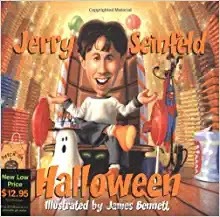
Lesley: My favorite mentor texts vary with the writing format I am teaching—poetry, prose, graphics, and audio memoirs, but, for memoir in general, I love Patricia Polacco’s memoir picture books and Cynthia Rylant’s picture books and her poetry book. In my book on memoir reading and writing, Bridging the Gap: Reading Critically and Writing Meaningfully to Get to the Core, I include mentor texts in each chapter. I have updated some of the oral or audio memoirs that I included. I love Jerry Seinfield’s Halloween which is available on YouTube and also was published as a picture book. Another favorite for older students is Carmen Agra Deedy's TED Talk "Spinning a Story of Mama" which I had the opportunity to see her present in person.
In April 2020 I wrote a guest blog for YA Wednesday, “Memoirs for Reading and Writing,” that reviewed full-length Upper Elementary, Middle Grades, and Young Adult memoirs but also included collections of short memoirs appropriate for different ages: http://www.drbickmoresyawednesday.com...
Carolee: Do you have any final tips for teachers who want to use memoir writing with struggling students?
Lesley: My best tip for teachers working with struggling or reluctant writers is to spend more time on brainstorming and prewriting. In Bridging the Gap I provide brainstorming forms for all the writings because the more brainstorming ideas and prewriting strategies (such as organizing ideas, adding details, using the senses, etc) writers employ, and the more time spent on prewriting, the easier, and better, the writing. Donald M. Murray wrote that “few teachers have ever allowed adequate time for prewriting, that essential stage in the writing process which precedes a completed first draft.” (“Write Before Writing” College Composition and Communication, Vol. 29, No. 4 (Dec., 1978), pp. 375-381, National Council of Teachers of English.
Carolee: Thank you so much for being with us today and for your invaluable insights.
Be sure to check out Lesley’s chapter in Story Frames for Teaching Literacy as well as her most recent book, Talking Texts: A Teacher’s Guide to Book Clubs Across the Curriculum.
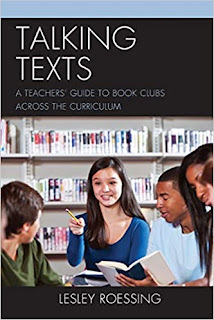
To explore the contrast between memoir and autobiography, see my blog post from earlier in April about Memoir Vs. Autobiography: All Our Stories Matter. For a list of books written by children’s authors about their personal life experiences, go to the end of my teacher’s guide on
Activities for Using Watercress with Older Students. The guide includes several writing activities linked to the Common Core for grades 3-8 based on autobiographical stories.
To revisit posts from other Story Frames authors, go to:
Amy Miller and Superhero Stories
The Family Story: Interview with Parent Advocate Mary Jo O'Neill.
Thanks for stopping by my blog. Sign up for my newsletter HERE to keep up with news and free offers and you will receive the free writing template for Travel Trouble sent directly to your email address.
August 19, 2022
It's My Whole Life - Q&A with Author Susan Wider
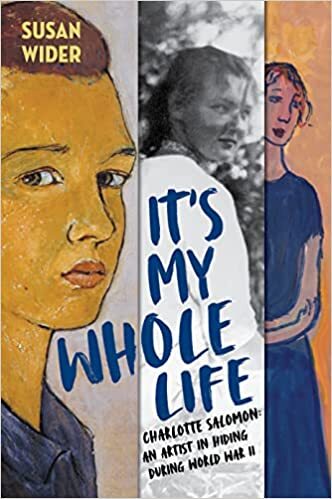 I'm excited to announce a wonderful new young adult biography just released this month by debut author, Susan Wider,
It's My Whole Life: Charlotte Salomon: An Artist in Hiding During World War 2.
It's the true story of a young Jewish artist who created a series of over a thousand paintings to document her experiences while she was hiding from the Nazis. It has been compared to The Diary of Anne Frank in pictures.
I'm excited to announce a wonderful new young adult biography just released this month by debut author, Susan Wider,
It's My Whole Life: Charlotte Salomon: An Artist in Hiding During World War 2.
It's the true story of a young Jewish artist who created a series of over a thousand paintings to document her experiences while she was hiding from the Nazis. It has been compared to The Diary of Anne Frank in pictures. This summer my blog has focused on Tips for Connecting Books for Summer Fun, but as I look back through my list, I realize that I left of exploring art through visiting museums and learning new skills like painting, drawing, or learning an instrument. That's all right. Susan's book has given me inspiration for my next summer series in 2023.
In the meantime, Susan was gracious enough to answer some questions about her book.
Carolee: In your author’s note you mention that you first became aware of Charlotte when another artist, Maira Kalman, shared in an interview about how Charlotte influenced her work? How has Charlotte influenced your work?
Susan: When the Nazi invasion of the south of France became inevitable, Charlotte described her need to “vanish for a while from the human plane and make every sacrifice in order to create.” With Charlotte’s words in my head, I find it easier to close out the world—as politely as possible—and disappear into my writing
Carolee: What inspired you to write a book about her?
Susan: When I realized that there were no books about Charlotte for young readers—apart from one Italian graphic novel-style biography—I wanted to write about her for teen readers. Charlotte deals with an avalanche of difficulties, from psychological abuse to family suicides to racism to genocide to living as a refugee, all issues that many teens face today.
Carolee: Your original manuscript for this book included three artists. Who were the other two?
Susan: As I was researching Charlotte’s story, I came across two other creative young women—among many hundreds of thousands—whose lives and talents were severely disrupted by World War II. In the initial manuscript I braided the stories of Charlotte Salomon, Helga Weiss, and Zdena Berger because their creative output was influenced by pre-concentration camp years (Charlotte); time inside a concentration camp (Helga); and post-war reflection on surviving four camps (Zdena).
Carolee: Those are three very interesting perspectives. How did you decide to focus on Charlotte?
Susan: When my agent sent that manuscript to various publishers, they all felt that each woman deserved her own book. Back to the drawing board and my agent suggested I start with Charlotte.
Carolee: What is one thing you hope young readers take away from Charlotte’s story?
Susan: In spite of everything she was up against—Grandfather, her stepmother, a family history of suicide, Adolf Hitler—Charlotte was able to find her voice in art and writing “with the feeling I had something I would be able to say to humanity.” I hope she inspires young readers to search for their own forms of self-expression, even in dark times.
Carolee: I was certainly inspired by her story when I read it. Art is what gave beauty and purpose to her life during a time that could have otherwise been unbearable. Thanks so much for sharing her story!
Thanks for stopping by my blog. Sign up for my newsletter HERE to keep up with news and free offers and you will receive the free writing template for Travel Trouble sent directly to your email address.
August 12, 2022
STEM to STEAM: The Collaboration Between Art and Science

In June we explored the connection between cooking and science with the book Science Experiments You Can Eat. Then in early August, we looked at the link between science and fairy tales with the book, Fairy Tale Science: Explore 25 Classic Tales Through Hands-On Experiments. This week we are going a little deeper into the connection between art and science.
I have personal experience on this topic. After completing my bachelor's degree in music therapy, one of the first clients I worked with was a man with a traumatic brain injury who had lost the ability to speak but could still sing. It was my first real introduction into the complexities and wonders of the human brain.
Since achieving my master's degree in communicative disorders and becoming a speech-language pathologist, I have often created songs to help my students remember concepts that they found challenging.
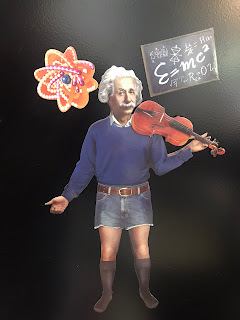 Einstein played the violin for inspiration. I keep him close to my work desk for a little inspiration of my own. Einstein once said, “If I were not a physicist, I would probably be a musician. I often think in music. I live my daydreams in music. I see my life in terms of music." He also said, "Imagination is more important than knowledge."
Einstein played the violin for inspiration. I keep him close to my work desk for a little inspiration of my own. Einstein once said, “If I were not a physicist, I would probably be a musician. I often think in music. I live my daydreams in music. I see my life in terms of music." He also said, "Imagination is more important than knowledge."The world is filled with people who work as doctors, inventors, or scientists who could have just as easily become professional artists. Dow Phumiruk, is the illustrator of Counting on Katherine and a host of other children's books. She is also a doctor. Her understanding of science informs many of her illustrations.
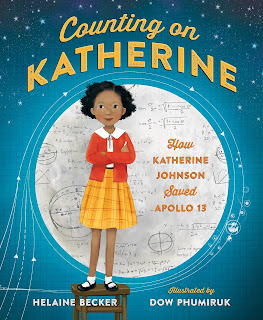
We have all experienced how beautiful places affect our mood, but they also affect our mind and body. My daughter is currently studying interior design and recently shared with me how specialized decorators use Evidence-Based Design to help create healthcare settings that reduce infections as well as stress for both patients and staff. These creative spaces also promote healing.
In 2010, The Rhode Island School of Design - RISD began advocating for the addition of creativity into STEM (Science, Technology, Engineering, Math) education, effectively turning it into STEAM. Since then they have engaged in several exciting projects such as helping to create a better space simulation suit with funding from HIGH SEAS and a NASA Rhode Island Space Grant. Apparel design students are also helping NASA create clothing for a 2025 30-day mission to the moon called Artemis. The RISD Co-Works Research Lab provides tutoring, coursework, technology, and other resources for students and faculty from a variety of disciplines to promote interdisciplinary innovation.
Throughout the month of September, Lerner Books is offering free videos and lesson plans for STEM/STEAM (Science, Technology, Engineering, Arts, and Mathematics). Find out how to sign up HERE. They have a lengthy list of books covering STEM topics. They also have an informative blog post on the topic of STEM to STEAM: Why Arts Belong in the Sciences where they highlight several well-known scientists that were also accomplished musicians and/or used the arts for inspiration.
Another Tip for Summer Fun is to learn an instrument or visit creative spaces like art museums. On that note, watch for my interview coming up soon with author, Susan Wider, about her debut middle-grade novel, It’s My Whole Life: Charlotte Salomon - An Artist in Hiding During World War II.
Thanks for stopping by my blog. Sign up for my newsletter HERE to keep up with news and free offers and you will receive the free writing template for Travel Trouble sent directly to your email address.
